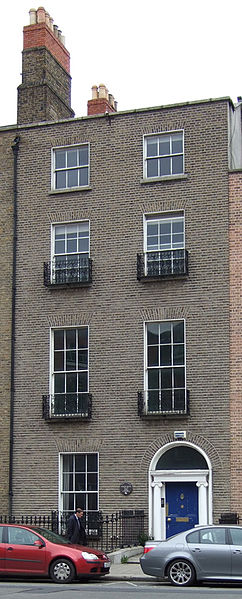The Black Triptychs are a series of three triptychs painted by the British artist Francis Bacon between 1972 and 1974. Bacon admitted that they were created as an exorcism of his sense of loss following the suicide of his former lover and principal model, George Dyer. On the evening of 24 October 1971, two days before the opening of Bacon's career-making retrospective at the Grand Palais, Dyer, then 37, alcoholic, deeply insecure and suffering severe and long-term depression, committed suicide through an overdose of drink and barbiturates in a room at the Paris hotel Bacon had allowed him to share during a brief period of reconciliation following years of bitter recrimination.
Triptych–August 1972. Oil on canvas, Tate Gallery
Triptych, May–June 1973, 1973. Oil on canvas. Private collection, Switzerland. The alarm indicated by the arrows in this work betrays the stoicism Bacon displayed on the night of the suicide and premiere, when he acted the model host, and met politicians and dignitaries "as if nothing had happened"
Dyer photographed by John Deakin, retouched by Bacon, who often folded or creased, or spattered with paint, photographs of friends so as to find distortions he could exploit in his paintings. Although Dyer was handsome and charming in his own raw way, he was out of his depth when dealing with both Bacon's wasp-tongued Soho set and intellectual art world friends.
Center panel from Bacon's Study for a Self-Portrait—Triptych, 1985–86. This work was painted after an extended period of examination of the effect of age and time on both himself his close friends, during a period when many those around him died. Tied to the black triptychs in theme, format, structure and tone, this work is considered the masterpiece of his late period.
Francis Bacon was an Irish-born British figurative painter known for his raw, unsettling imagery. Focusing on the human form, his subjects included crucifixions, portraits of popes, self-portraits, and portraits of close friends, with abstracted figures sometimes isolated in geometrical structures. Rejecting various classifications of his work, Bacon said he strove to render "the brutality of fact." He built up a reputation as one of the giants of contemporary art with his unique style.
Bacon photographed in the early 1950s
Francis Bacon's birthplace at 63 Baggot Street, Dublin
Three Studies for Figures at the Base of a Crucifixion, 1944. Oil and pastel on Sundeala board. Tate Britain, London
Three Studies for a Portrait of Henrietta Moraes, 1963








